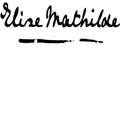Yang draws our attention to how movement, sentiments, and emotions operate in various social, cultural, and political contexts by mobilising light, sound, moisture, heat, and scent to disclose memories and associations. Choreographed theatrical lights brush over venetian blinds and cast constant but slow-moving shadows, while drying racks are transformed into anthropomorphic creatures in acrobatic postures. Over the past thirty years, Yang has been commuting primarily between Berlin and Seoul. Themes like migration, identity, history, and tradition are therefore naturally embedded in her practice, closely linked to narratives from music, literature, and politics. Folk rituals and traditional crafts have become another focus over the past decade. On the other hand, Yang also critically reflects on ideas from modern Western art history. Frequently departing from keen observation of social issues, her work always remains subjective, infused with an intense yearning for intimacy.
The Randing Intermediates and Quasi-Yves Klein Blue
Yang’s colourful rattan sculptures, The Randing Intermediates – Underbelly Alienage Duo (2020), were made in collaboration with artisans in the Philippines. Their organic forms, reminiscent of sea creatures, have been woven using traditional techniques and are adorned with artificial plants. Equipped with industrial handles, suggesting they can be moved around, The Randing Intermediates could also refer to ceremonial rituals where non-human symbols are employed to represent human life. The walls in this space are painted a striking shade: Quasi-Yves Klein Blue, similar to the colour patented by the famous French artist Yves Klein (1928–1962). Interestingly, this specific hue was selected by the Kunsthal’s security staff, who picked it out of several locally sourced paint samples they thought it most closely resembled the original. The term ‘quasi’ is significant here, suggesting something that is very close to the original, but not quite the same. This subtle distinction raises questions about authenticity and legacy.
Star-Crossed Rendezvous after Yun
Especially created for Leap Year, the large-scale installation Star-Crossed Rendezvous after Yun (2024) was inspired by the life and work of Korean composer and political dissident Isang Yun (1917–1995). The installation comprises ascending geometric formations of venetian blinds and a choreography of light paired with the musical score of Yun’s ‘Double Concerto’ (1977). Composed for a small orchestra and two solo instruments—harp and oboe, respectively representing a princess and a cowherd—this concerto is loosely based on a Korean folktale. It conveys the sorrow of separation of two condemned lovers, as well as the joys of their annual reunion—a possible analogy with a divided Korea.
About Haegue Yang
Haegue Yang (1971, Seoul, South Korea) lives and works in Berlin and Seoul. She has been teaching at the Städelschule in Frankfurt am Main since 2017. Yang regularly participates in international art events, and her work is represented in major institutional and private collections around the world. In 2018, Yang won the Wolfgang Hahn Prize at Ludwig Museum in Cologne and in 2022 was awarded the 13th Benesse Prize during the Singapore Biennale. Recent institutional solo exhibitions by Yang took place at Helsinki Art Museum (2024), S.M.A.K., Gent (2023), Pinacoteca de São Paulo (2023), SMK – National Gallery of Denmark, Copenhagen (2022), MCAD, Manila (2020), Tate St Ives (2020), MoMA, New York (2019), The Bass, Miami Beach (2019), Museum Ludwig, Cologne (2018), and Centre Pompidou, Paris (2016). She also participated in documenta 13 in Kassel (2012), and her work was represented at the South Korean Pavilion during the 53rd Venice Biennial (2009). In February 2025, the Nasher Sculpture Center in Dallas,Texas will present a solo exhibition of Yang’s work.
Look&Do-tour Haegue Yang (Ages 6-12)
Discover the art of Haegue Yang! Grab the free booklet full of questions and assignments, and let her unique installations and sculptures stimulate your senses.
Catalogue
The exhibition is accompanied by a richly illustrated, 192-page catalogue (in English) that includes essays by Yung Ma (Senior Curator Hayward Gallery) and Berlin-based writer Pablo Larios, an interview with the artist Haegue Yang by curator and art historian Lynne Cooke, and a graphic essay on Yang’s life and work by Taipei-based illustrator Chihoi. The publication has been designed by London-based design studio Wolfe Hall. It is available for purchase in the Kunsthal webshop and in the Kunsthal store.
Press
















